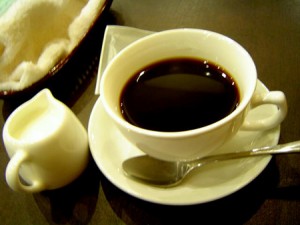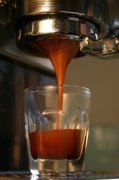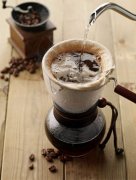What is Single Coffee?

In the process of coffee making, if a coffee bean is used alone, then the coffee produced is called "single coffee".
However, because some coffee varieties have obvious deficiencies in taste and style, such as being used to make coffee alone, there will be obvious deficiencies in taste, so people are beneficial to other varieties of coffee to make up for their defects, and it is common to use two or more kinds of coffee mixed together to make a blend (such as the famous Mamba coffee-Mantenin + Brazil Sandos), and this coffee combination obtained by mixing two or more different coffees is called "comprehensive coffee".
PS: In fact, some blue mountain coffee on the market is actually a product of comprehensive coffee, blending with the use of some blue mountain coffee or coffee beans similar to blue mountain coffee flavor to reconcile, blending a similar blue mountain coffee flavor "comprehensive coffee."
2. Method for preparing hand-brewed drip coffee
Mellita coffee is a simple and well-known brewing method invented by Mrs. Mellita (1873~1950) of West Germany.
Now, with the popularity of drip coffee in the Japanese coffee industry, Japan has also developed a "coffee road". They believe that hand-brewed drip coffee is not a simple brewing method, but a coffee brewing method that requires baristas to accumulate long-term practice and experience.
3. Tool for using hand-brewed drip coffee
filter bowl
Until today, filter cups have developed a lot of styles and materials, the most commonly used filter cups are resin 3-hole filter cups (there are also traditional 2-hole filter cups, traditional 1-hole filter cups and improved 1-hole filter cups), and the filter cup material is not limited to resin materials, ceramic filter cups and copper filter cups are gradually moving towards mainstream development.
The makers of the filter cup believe that the thermal conductivity of different materials and the improved wall groove texture can greatly affect the final quality of coffee. But in the end which kind of material and which kind of shape filter cup is the best on the benevolent.
percolator
The filter pot is a tool for connecting filter cups. The choice of filter pot is as transparent as possible, and it is best to withstand cold and heat shrinkage. Of course, the detailed scale mark on the filter pot is also a good helper for baristas to extract accurately.
filter paper
Different types of filter cups have corresponding matching filter paper, generally speaking, filter paper is divided into drifting filter paper and non-drifting filter paper, because the quality of the paper is not drifting filter paper often the price is slightly more expensive and drifting filter paper, and for health, because the bleached filter paper in addition to a certain smell (in brewing will affect the taste of coffee) The chemical composition of the fluorescent agent used is also extremely detrimental to human health. Therefore, the comprehensive above reasons suggest that the use of non-drift filter paper is appropriate.
kettle
The small mouth pot is a key to brewing a good cup of coffee. When choosing a small mouth pot, it is generally appropriate to choose a slightly larger one, which is more conducive to maintaining the stability of the water temperature. In addition, the choice of the spout is also a major focus. When choosing, you need to choose a mouth type that is easier to control the water flow to ensure that the brewing process is smooth.
the thermometer
Thermometer is essential equipment for drip coffee brewing. Due to the different roasting degree of various coffee beans, the water temperature that excites the characteristics of beans will also be slightly different, so the role of thermometer in this is self-evident.
Important Notice :
前街咖啡 FrontStreet Coffee has moved to new addredd:
FrontStreet Coffee Address: 315,Donghua East Road,GuangZhou
Tel:020 38364473
- Prev

What is espresso?
Espresso is basically a male drink, energetic and unpretentious, and an enhanced version of kung fu coffee for real coffee ghosts. Double does not mean doubling the amount of coffee, but the same amount of water, double the amount of coffee powder, coffee still looks like that, but the concentration has doubled. The level is equivalent to that in spirits and perfumes.
- Next

The reason why you fall in love with coffee-9 top glamorous coffee
1. Gold Super Blue Mountain Coffee ◆ Origin: Jamaica, Caribbean Central American ◆ roasting method: City Roast ◆ characteristics: Jamaica Blue Mountain and other beans mix, the flavor is better, comparable to the alpine Blue Mountains on the market often confuse the public with its beans that look like Blue Mountain Coffee, and even use huge coffee beans to call themselves Blue Mountain Coffee, really pure Blue Mountain Coffee
Related
- How did the Salvadoran coffee industry develop in Central America?
- What exactly does the golden cup extraction of coffee mean?
- The Origin of Coffee flower
- [2023 Starbucks World Earth Day] there are more meaningful things besides free Starbucks coffee!
- What kind of coffee is there in Spain? 9 Flavors of Spanish Coffee
- Aromatic African coffee| Kenya's coffee culture and historical production area
- Liberica Coffee Bean knowledge: the characteristics of Liberian Coffee beans of the three original species of Coffee beans
- The origin and formula of Spanish latte introduces the taste characteristics of Bombon coffee in Valencia, Spain.
- How to adjust the solution of over-extracted coffee
- What is the tasting period of coffee beans? What is the period of coffee and beans? How should coffee wake up and raise beans?

